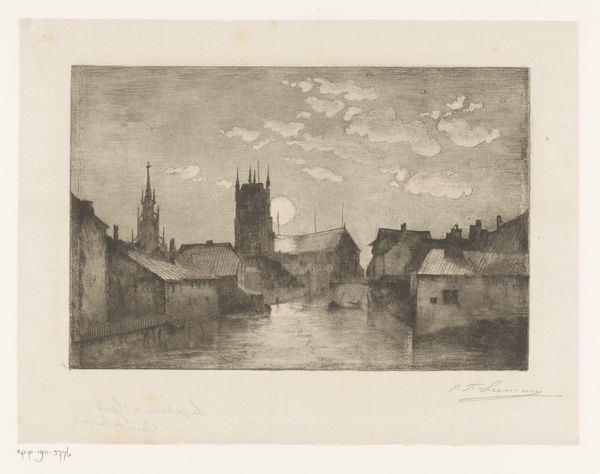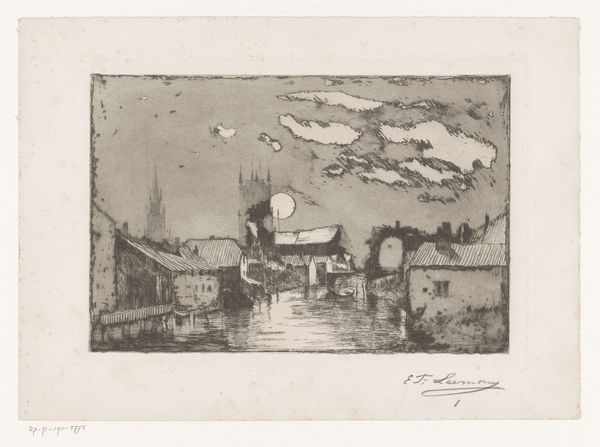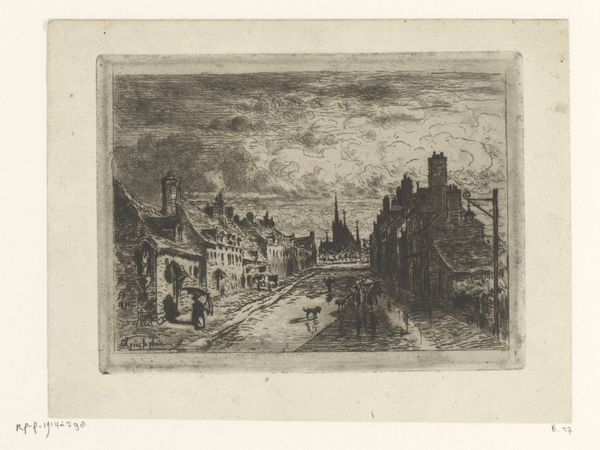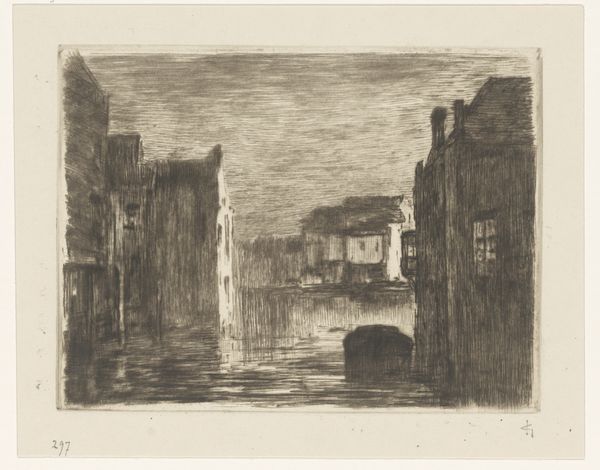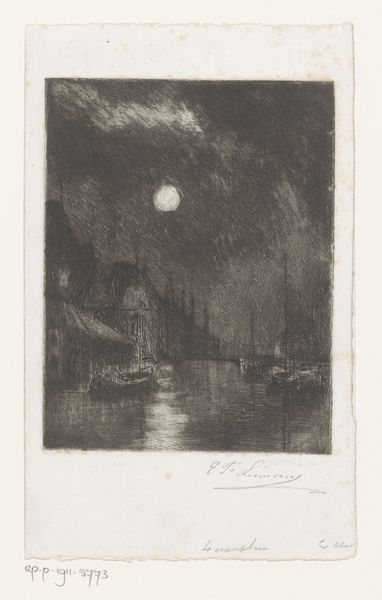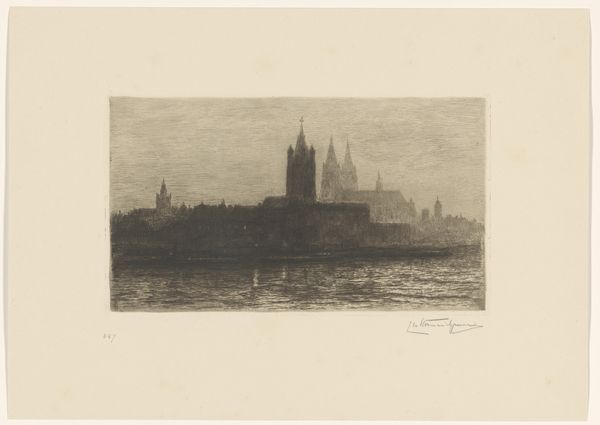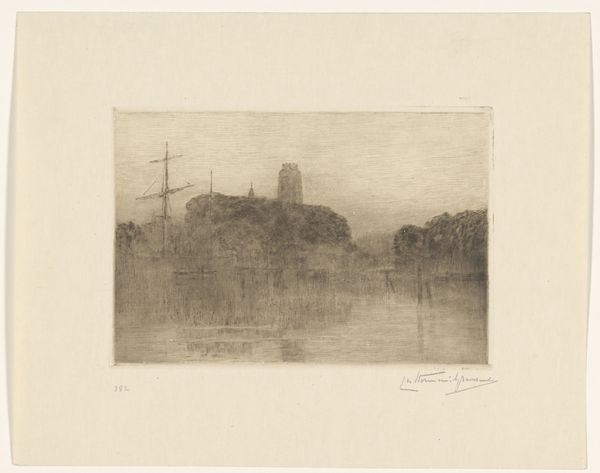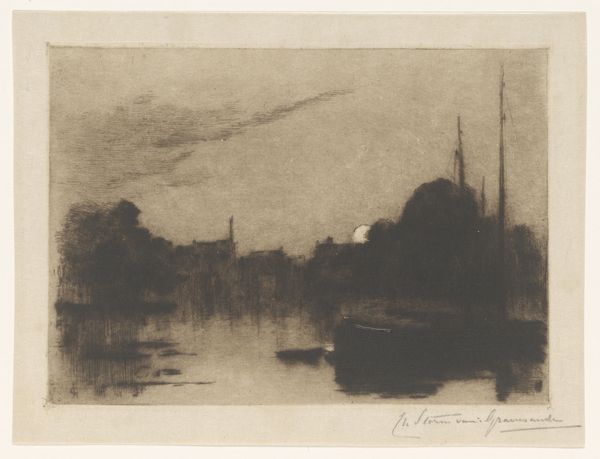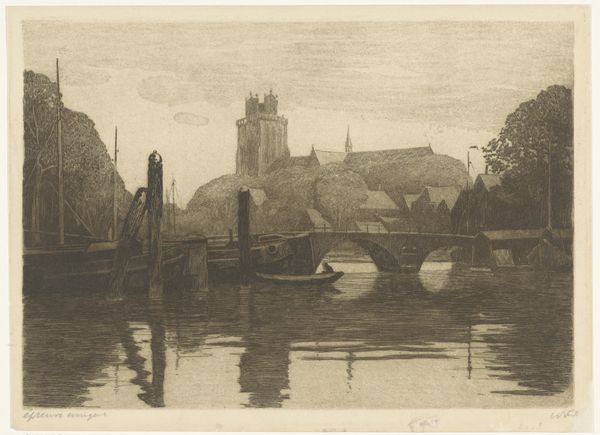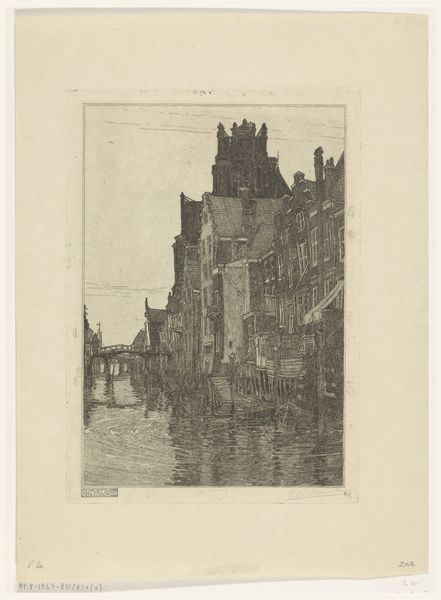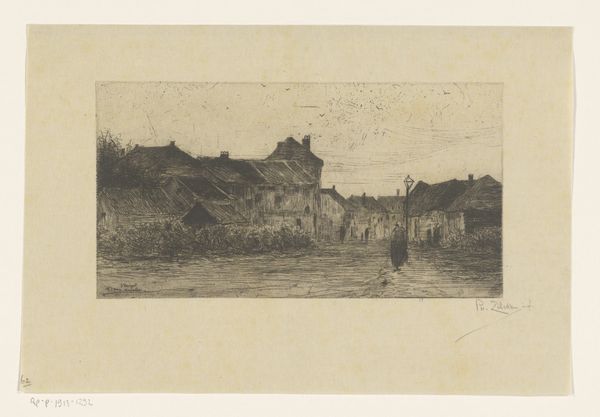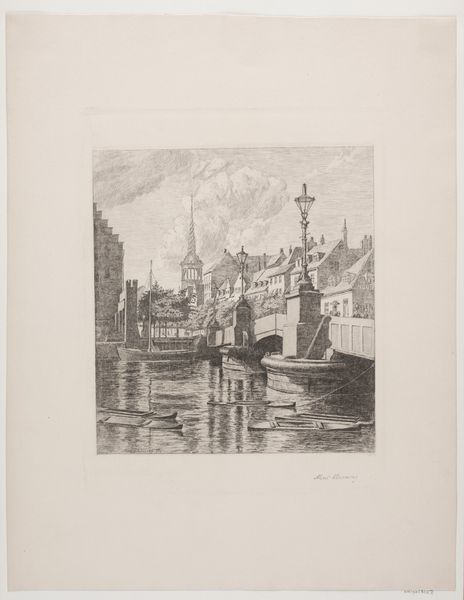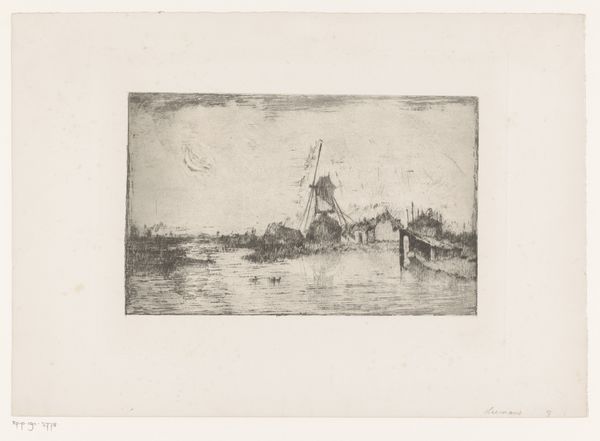
Dimensions: height 215 mm, width 313 mm
Copyright: Rijks Museum: Open Domain
Curator: This is “Riviergezicht in Gent bij maanlicht” – “River View of Ghent by Moonlight” – an etching by Egide François Leemans. While it's dated from 1849 to 1883, it certainly captures something timeless. Editor: It’s strikingly eerie, isn’t it? The monochrome tones create a somber atmosphere, and the glowing moon, almost too bright, contrasts sharply with the dark, detailed buildings below. Curator: Leemans employs the etching technique to great effect here, manipulating light and shadow. Notice the density of the lines creating textures, particularly in the reflection of the moonlight on the water. Semiotically, it's fascinating. The city, almost ghostlike, is evoked through line, form, and contrast. Editor: Yes, the composition positions the church spire prominently, juxtaposing the celestial with the earthly. But what does this evoke? I’m reminded of the historical tensions between the church and the emerging urban landscape, of power structures, and the church’s influence on the city’s identity at that time. The almost total absence of human presence evokes the isolation of urban environments, or their vulnerability at times of upheaval. Curator: Perhaps. Though I’m more interested in Leemans' deliberate manipulation of the vanishing point, drawing the eye towards the celestial glow and creating an almost spiritual sense of space within the formal, structured architectural details. It creates visual tension with what one expects from more grounded cityscapes. Editor: The romantic treatment certainly leans that way. I wonder about access too - who owned prints like these and who could interpret such symbolism? In Ghent during this era, literacy and class played vital roles. This etching might reinforce dominant perspectives and romanticise a social hierarchy that still oppressed many. Curator: While that’s certainly valid as social context, the artwork itself achieves its atmospheric affect through contrasts, line density and overall composition that, from a formal perspective, evokes this evocative rendering of this nocturne in the ancient city. Editor: I appreciate the artistic technique for sure but acknowledging its social framing adds another enriching layer. Curator: Indeed, it prompts reflection on the broader implications of artistic choices and their impact, historically and now. Editor: A reminder that artistic interpretations must extend beyond formalism to see, question and ultimately appreciate the intricate tapestry of influences defining both past and present.
Comments
No comments
Be the first to comment and join the conversation on the ultimate creative platform.
